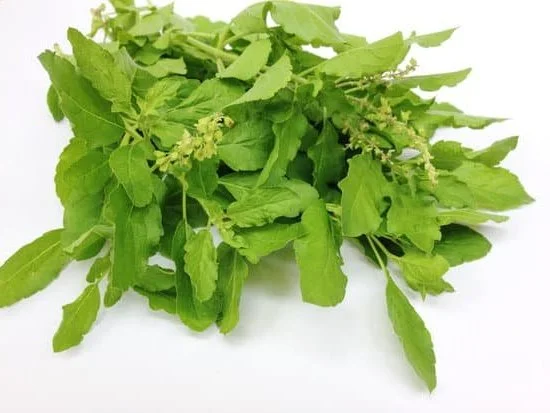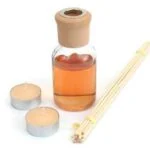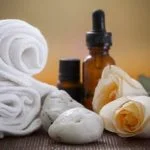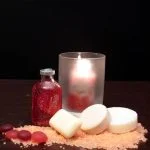
Tea tree oil, an essential oil derived from the leaves of the tea tree plant, has long been valued for its numerous health benefits. One such popular use is in aromatherapy, where its distinct fragrance is harnessed to promote wellness and well-being. In this article, we will take a deep dive into the world of tea tree oil and aromatherapy, exploring its rich history, therapeutic properties, and various ways it can enhance our daily lives.
Aromatherapy is a holistic healing practice that utilizes the power of scent to positively impact our physical, mental, and emotional well-being. By inhaling the fragrant molecules of essential oils like tea tree oil, we can experience a range of therapeutic effects that help promote relaxation, reduce stress and anxiety, improve mood, alleviate pain and inflammation, boost immunity, enhance sleep quality, and more.
Tea tree oil has been used in traditional medicine practices for centuries due to its potent antimicrobial properties. From ancient Aboriginal tribes in Australia to modern-day herbalists worldwide, this natural remedy has gained significant recognition for its ability to combat bacteria, fungi, viruses, and other harmful microorganisms. Additionally, tea tree oil contains compounds like terpinen-4-ol that possess anti-inflammatory, antioxidant, and antiviral effects.
Now that we have a glimpse into the vast potential of tea tree oil for aromatherapy and understand the basics of this fragrant healing practice let us delve further into its origins and extraction process.
Understanding Aromatherapy
Aromatherapy is a holistic healing practice that utilizes the power of essential oils to promote physical, emotional, and mental well-being. It is based on the belief that certain scents have the ability to stimulate specific areas of the brain, triggering various responses in the body. Understanding aromatherapy involves exploring the different aspects of this therapeutic practice and its benefits.
One important aspect of aromatherapy is the concept of fragrance healing. Fragrances have been used for centuries for their therapeutic effects on the human body and mind. In fact, ancient civilizations such as Egypt, Greece, and China incorporated aromatic plants into their daily lives for both medicinal and spiritual purposes. Aromatherapy builds upon this wisdom by harnessing the concentrated essences found in essential oils to enhance overall health and well-being.
The art of fragrant healing involves understanding how different scents can affect our emotions and physical sensations. Each essential oil carries unique properties that can be tailored to address specific concerns or goals. For example, lavender oil is renowned for its calming properties, while peppermint oil is invigorating and revitalizing. By selecting the right combination of essential oils, aromatherapists can create blends that target particular issues such as stress relief, relaxation, mood enhancement, or even energy boost.
To fully comprehend aromatherapy, it is also important to explore how scents are delivered to our senses. This can be achieved through various methods such as inhalation, massage, or diffusing oils in a room. Inhalation involves breathing in the aromatic molecules directly or using a diffuser to disperse them into the air. This method allows the fragrance molecules to reach our olfactory system quickly and trigger an immediate response in our brain.
In summary, understanding aromatherapy delves into exploring fragrance healing and its connection with our senses and emotions. By utilizing essential oils with specific therapeutic properties, practitioners can create blends that cater to individual needs and goals. The various methods of delivering these scents into our bodies further enhance the overall effectiveness of aromatherapy.
The Origins and Extraction of Tea Tree Oil
Tea tree oil, with its vast array of therapeutic benefits, has gained significant popularity in the field of aromatherapy. But have you ever wondered where this incredibly versatile essential oil comes from? In this section, we will delve into the origins and extraction process of tea tree oil, providing you with fascinating insight into its rich history and how it is produced.
Tea tree oil is derived from the leaves of the Melaleuca alternifolia plant, which is native to Australia. The Aboriginal people have long recognized the healing properties of this plant and used it for various medicinal purposes. They would crush the leaves and apply them directly to wounds and skin infections due to their potent antimicrobial properties. The use of tea tree oil in traditional healing practices has been passed down through generations, contributing to its rich cultural history.
The extraction process of tea tree oil involves steam distillation. Once the leaves are harvested, they are subjected to a hydrodistillation or steam-distillation process. The steam carries the volatile components of the leaves into a condenser where they are cooled and condensed back into a liquid form. As a result, pure tea tree oil is collected as a byproduct. This method ensures that all the beneficial compounds present in the leaves are properly extracted without compromising their integrity.
To fully understand the production process of tea tree oil, it’s important to note that quality control plays a vital role. Reputable manufacturers carefully select only mature leaves with high levels of active compounds for extraction. Additionally, they follow strict guidelines to ensure that no synthetic additives or chemicals are introduced during processing, preserving the purity and effectiveness of the final product.
The Science Behind Tea Tree Oil
Tea tree oil, also known as melaleuca oil, is renowned for its numerous therapeutic properties. To understand its effectiveness in aromatherapy, it is crucial to delve into the science behind this natural remedy.
The chemical composition of tea tree oil plays a significant role in determining its therapeutic properties. The oil is primarily composed of terpenes, which are organic compounds responsible for the characteristic aroma and health benefits of various essential oils.
In the case of tea tree oil, its main active ingredient is terpinen-4-ol, which accounts for up to 40% of the oil’s composition. Terpinen-4-ol has been extensively studied and proven to possess powerful antimicrobial and anti-inflammatory properties.
Numerous scientific studies have investigated the therapeutic potential of tea tree oil. It has been found to exhibit broad-spectrum antimicrobial activity against bacteria, fungi, and viruses. This makes it a valuable tool in combatting common skin infections such as acne, athlete’s foot, and ringworm. Additionally, tea tree oil has shown promise in reducing inflammation and soothing irritated skin conditions like eczema and psoriasis.
Furthermore, the science behind tea tree oil suggests that it may have immunomodulatory effects by stimulating immune cells’ activity. This property can be beneficial in strengthening the body’s defense system against diseases and promoting overall wellness. Moreover, tea tree oil possesses analgesic properties that can alleviate pain and discomfort associated with various health issues.
Tea Tree Oil’s Benefits for Aromatherapy
Tea Tree Oil has become increasingly popular in the field of aromatherapy due to its numerous benefits for enhancing wellness and well-being. This section will explore the various ways in which Tea Tree Oil can positively impact individuals using aromatherapy techniques.
Clearing Respiratory Passages
One of the key benefits of Tea Tree Oil in aromatherapy is its ability to clear respiratory passages. When this essential oil is diffused or inhaled, its antimicrobial properties help to combat congestion and promote easier breathing. It can be especially beneficial for individuals suffering from colds, sinus infections, or allergies. Through inhalation, Tea Tree Oil helps to reduce inflammation and cleanse the airways, providing relief and comfort.
Promoting Relaxation and Reducing Stress
Tea Tree Oil also possesses calming properties that are ideal for promoting relaxation and reducing stress. When used in aromatherapy, it can create a soothing atmosphere that helps to enhance mental well-being and emotional balance.
The pleasant fragrance of Tea Tree Oil can help alleviate tension and anxiety, promoting a sense of calmness and tranquility. Its therapeutic effects on both the mind and body make it an excellent choice for individuals seeking to incorporate aromatherapy into their self-care routine.
Boosting Immune Function
Another significant benefit of Tea Tree Oil in aromatherapy is its potential to boost immune function. This essential oil contains powerful antimicrobial compounds that can help strengthen the body’s defense against pathogens. By diffusing Tea Tree Oil or using it topically during massage therapy, individuals may experience heightened protection against bacteria, viruses, and other harmful microorganisms. Additionally, Tea Tree Oil’s immune-boosting properties may contribute to faster healing processes and increased overall well-being.
The benefits mentioned above are just a glimpse into how Tea Tree Oil enhances wellness and well-being through aromatherapy practices. As individuals continue to explore the potential of natural remedies, Tea Tree Oil is likely to play a significant role in promoting a holistic approach to health and self-care. Next, we will delve into different ways in which Tea Tree Oil can be used for aromatherapy purposes, providing a comprehensive overview of the various techniques and methods available.
Different Ways to Use Tea Tree Oil in Aromatherapy
Tea Tree Oil can be used in various ways for aromatherapy to harness its power and experience its therapeutic benefits. In this section, we will explore the different methods of using Tea Tree Oil, such as inhalation, massage, and more.
Inhalation
Inhaling Tea Tree Oil is one of the most common and effective ways to enjoy its aromatic benefits. The scent of the oil can directly impact our limbic system, which controls emotions and memories. Inhalation of Tea Tree Oil can help promote relaxation, reduce stress and anxiety, and uplift mood.
One simple way to inhale Tea Tree Oil is by using a diffuser. Diffusers work by dispersing the oil into the air in fine particles, allowing you to breathe in the therapeutic aroma. You can add a few drops of Tea Tree Oil to a diffuser along with water according to the manufacturer’s instructions. Alternatively, you can also place two to three drops of Tea Tree Oil on a tissue or cotton ball and inhale deeply.
Massage
Tea Tree Oil is widely used in aromatherapy massages due to its soothing properties. When applied topically during massage therapy, it can provide relaxation while also benefiting the skin.
To use Tea Tree Oil for massage, dilute it with a carrier oil such as jojoba oil or coconut oil before applying it to the skin. This prevents any potential irritation that may occur from applying undiluted essential oils directly on the skin. Generally, it is recommended to mix 2-3 drops of Tea Tree Oil with 1 tablespoon of carrier oil for a safe concentration.
During the massage, gently apply the mixture onto your skin in long strokes or circular motions. The combination of massage techniques and Tea Tree Oil can help relieve muscle tension, improve circulation, and enhance overall well-being.
Other Ways to Use
Apart from inhalation and massage, there are other ways to incorporate Tea Tree Oil into your aromatherapy routine. You can add a few drops of Tea Tree Oil to your bathwater for a calming and rejuvenating experience. The warm water will help the oil disperse, creating a fragrant atmosphere that promotes relaxation.
Tea Tree Oil can also be used in homemade beauty products such as lotions, creams, and soaps. Its antibacterial and antifungal properties make it an excellent ingredient for addressing skin concerns like acne, blemishes, and fungal infections.
Additionally, you can create room sprays by diluting Tea Tree Oil with water in a spray bottle. This allows you to freshen up your living spaces while enjoying the cleansing and purifying effects of Tea Tree Oil.
By exploring these different methods of using Tea Tree Oil in aromatherapy, you can discover which techniques work best for you and fully harness the power of this natural gift from nature. Remember to always follow safety guidelines and consult with a qualified aromatherapist or healthcare professional before using essential oils.
Safety Precautions and Considerations
Tea Tree Oil is a powerful addition to any aromatherapy routine, but it is important to use it safely and be aware of potential side effects. While generally considered safe when used properly, there are a few precautions and considerations to keep in mind.
First, tea tree oil should always be diluted before use, as it is highly concentrated and can cause skin irritation or allergic reactions if applied directly. A general rule of thumb is to use one drop of tea tree oil per teaspoon of carrier oil, such as coconut or almond oil. This helps to ensure that the concentration is not too strong for your skin.
It’s also important to do a patch test before using tea tree oil on your skin. Apply a small amount of diluted oil to a small area and wait 24 hours to see if you have any adverse reactions. If you experience any redness, itching, or irritation, discontinue use immediately.
Ingesting tea tree oil should be avoided, as it can be toxic if swallowed. The oil is meant for external use only and should not be ingested under any circumstances. Additionally, tea tree oil should not be used on or around pets as it can be harmful to them.
When using tea tree oil in aromatherapy diffusers or inhalation methods, remember that less is more. Start with just a few drops in your diffuser or inhaler and adjust the amount according to your personal preference. It’s also important to never heat tea tree oil directly over an open flame or on a stovetop as this can cause the release of toxic fumes.
By following these safety precautions and considerations, you can ensure that you are using tea tree oil in a safe and effective manner for your aromatherapy needs. As always, consult with a healthcare professional before beginning any new treatment or if you have any concerns about using tea tree oil.
Tea Tree Oil Blends for Aromatherapy Recipes
Aromatherapy is a powerful therapeutic practice that relies on the use of essential oils to promote physical and emotional well-being. One of the most versatile essential oils that can be used in aromatherapy is tea tree oil. Known for its antiseptic and antimicrobial properties, tea tree oil offers numerous benefits when blended with other essential oils. By creating customized scents, individuals can tailor their aromatherapy experience to meet their specific needs and moods.
When it comes to crafting tea tree oil blends for aromatherapy recipes, the possibilities are endless. Tea tree oil combines well with many other essential oils, allowing for the creation of unique scents that serve different purposes. For relaxation and stress relief, try blending tea tree oil with lavender or chamomile essential oil. This blend helps to promote calmness and tranquility, providing a soothing effect on both the body and mind.
For an energizing and uplifting blend, consider combining tea tree oil with citrus essential oils such as lemon or orange. The citrus scent invigorates the senses and boosts mood, making it an excellent choice for those who need a pick-me-up during the day. Additionally, tea tree oil can be blended with eucalyptus or peppermint essential oil to create a refreshing and invigorating aroma that clears the respiratory system and enhances mental clarity.
It is important to note that when adding tea tree oil to your aromatherapy blends, it should be diluted properly to maintain safety and effectiveness. It is recommended to use a carrier oil such as coconut or almond oil as a base for your blend. Generally, two to three drops of tea tree oil per one ounce of carrier oil is sufficient. However, the concentration may vary depending on personal preference and sensitivity.
Success Stories and Testimonials
Tea Tree Oil has gained popularity in the field of aromatherapy for its numerous benefits and therapeutic properties. Many individuals have experienced firsthand the positive impact that Tea Tree Oil has had on their well-being and overall health. This section will delve into success stories and testimonials from those who have incorporated Tea Tree Oil into their aromatherapy routines.
Countless people have found relief from various ailments by incorporating Tea Tree Oil into their aromatherapy practices. For example, individuals suffering from respiratory conditions such as allergies, asthma, or bronchitis have reported improved breathing and reduced congestion after using Tea Tree Oil for inhalation therapy. Its anti-inflammatory properties help to soothe the airways and alleviate symptoms associated with respiratory issues.
Moreover, Tea Tree Oil has shown remarkable results in skincare. Many individuals struggling with acne, eczema, or oily skin have shared their success stories after incorporating this essential oil into their skincare routines. The antibacterial and antimicrobial properties of Tea Tree Oil help to fight acne-causing bacteria, reduce inflammation, and promote healing. It is often hailed as a natural alternative to harsh chemical treatments and has been proven effective in improving skin conditions.
Furthermore, tea tree oil’s impact on mental health and emotional well-being should not be overlooked. Aromatherapy with tea tree oil has been known to reduce stress levels, relieve anxiety symptoms, and even improve sleep quality for many individuals. The calming scent of tea tree oil can create a serene atmosphere that promotes relaxation and mental clarity.
These success stories highlight the transformative qualities of Tea Tree Oil when used in aromatherapy practices. However, it is important to note that everyone’s experiences may vary due to individual differences and preferences. It is advisable to consult with a healthcare professional before incorporating any new essential oils into your routine, especially if you have any pre-existing medical conditions or are taking medication.
Wrapping it Up
Tea tree oil has long been recognized for its powerful therapeutic properties and its ability to enhance wellness and well-being through aromatherapy. As we wrap up this comprehensive guide to tea tree oil for aromatherapy, it is important to reflect on the future of this extraordinary essential oil in the world of fragrant healing.
The use of tea tree oil in aromatherapy has grown in popularity over the years, and its future looks promising. With increasing awareness about natural remedies and holistic approaches to health, more individuals are seeking alternative solutions for their physical and emotional well-being. Tea tree oil fits perfectly into this mindset, as it offers a natural and effective way to improve various aspects of one’s life.
As research and knowledge about essential oils continue to expand, we can expect new discoveries about tea tree oil’s potential benefits for aromatherapy. Scientists are continually uncovering the intricate chemical composition of essential oils and their effects on the human body. This ongoing exploration may reveal even more uses for tea tree oil, further solidifying its place as a prominent player in the field of aromatherapy.
In conclusion, tea tree oil has emerged as an invaluable tool for those seeking the benefits of aromatherapy. Its rich history, production process, chemical composition, and therapeutic properties all contribute to its effectiveness in enhancing wellness and well-being.
With proper usage guidelines and precautions in mind, individuals can harness the power of tea tree oil through inhalation, massage, and other methods. As we look toward the future, tea tree oil is poised to continue making a significant impact in the field of fragrant healing, improving lives one scent at a time.




